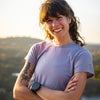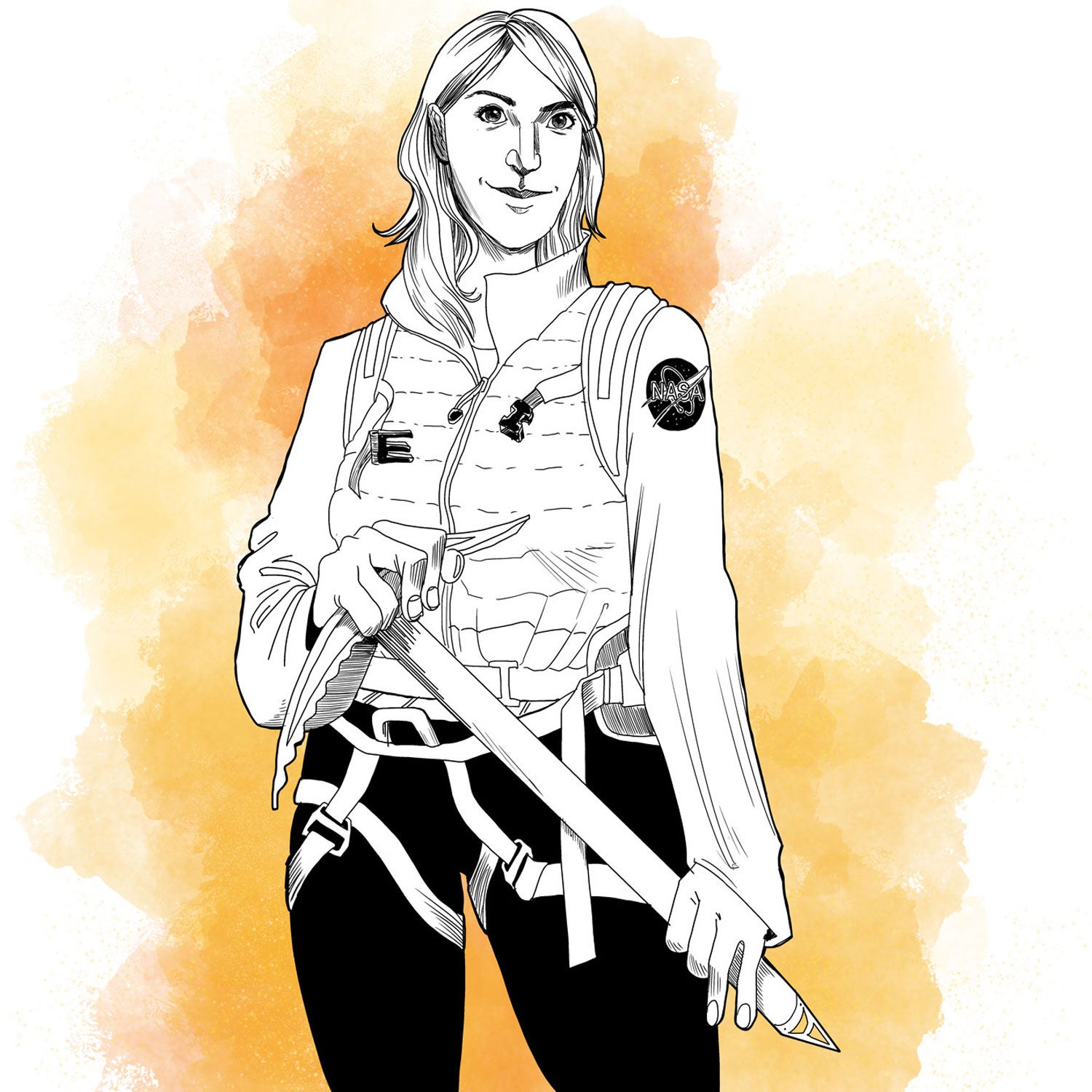Name: Ulyana Nadia Horodyskyj
Job: Founder of , part-time mountain guide, visiting professor at Colorado College
Home Base: Broomfield, Colorado
Age: 32
Education: Bachelor��of Science in��Earth Science, Rice University; Master’s in Planetary Geology, Brown University; Ph.D. in Geological Sciences,��University of Colorado Boulder
Ulyana Nadia Horodyskyj has always been an explorer, interested in the mysteries of planet earth and the space beyond it. One of her first research projects investigated��how solar sails could be used to deliver supplies into outer space. (Elon Musk, if you’re reading this…) While earning her master’s degree at Brown, she investigated how Iceland could be used as an analog for Martian exploration. By the time she attended graduate school at the University of Colorado, she had conducted research on��all seven continents and started her quest to climb their highest summits.��
Eventually she combined her love of science and alpinism for her Ph.D. research on glacial lakes in the Himalayas. She launched��the in 2011, working with Sherpas in Nepal to study the effects of climate change on the country’s glacial lakes and how that would affect mountain communities.
“When my scientific work has application and can be used to help people, it holds a lot more meaning for me,” says Horodyskyj. Plus, she and her team got��to use drones and robotic submarines and hold rubber duck races in glacial streams, which was just plain fun. In 2016 she��founded��, an initiative that takes educators and the public on science-based expeditions. One trip might have participants probing snow in the Andes, while another sets up Mars analog sites in the Mojave desert—teaching participants how to drive on another planet. Fun factor aside, Horodyskyj publishes a majority of the research conducted on these trips, providing valuable data on a variety of climatological questions.
Also in 2016, her scientific and expedition��chops earned her a spot��in ��(HERA) project: With three others, she was locked��into a faux space station in a Texas warehouse for a month to simulate the physical and psychological effects of long-term space travel. Having once spent��three frigid weeks hunkered down in a tent with two other scientists on Canada’s Baffin Island, being stuck in a windowless pod��the size of a large closet was a cinch. Now, she’s one of 100 applicants that NASA selected out of 18,000 to potentially become an astronaut. “I’m really interested in the moon,” says Horodyskyj. “I’ll see it from a mountaintop��and think, ‘I want to stand on that.’ The ultimate places to visit in the outer solar system, though, would be Europa and Pluto. I’m a bit obsessed with ice.”
On How She Broke into Her Profession:��“I grew up loving the outdoors and my parents were always taking us camping and hiking. I got into science as a preteen, competing in science fairs and doing experiments.��I’ve been working on blending these two things together, science and the outdoors, my whole life.��I created Science in the Wild��to do that.”
On Her Morning Routine:��“I’m actually kind of a night owl. I stay up pretty late and��I do make a point to get enough sleep. When you’re training really hard for an expedition,��you have to. I get out of bed after��eight��hours, then I wake up and eat a really good breakfast. I love fried eggs, usually with a beef frank, spinach, and some vegetables. It’s all protein, carbs, and fats, and it’s really good. Then, I check my email and go work out.”
On Her Craziest Day at Work: “I was in Nepal on a solo expedition where I would come and go from the field, which was a glacial lake, a lot. I had this buoy��with a lot of data and measurements out on the lake, but the ice was really thin and the buoy was sinking, so I had to go rescue it. I was spread eagle on this really thin ice, crawling out to go get it so I wouldn’t lose my data. It was cold and I was working around 15,000 feet. I assessed the terrain and the risk, and decided to rescue my buoy out on this lake.”
On the Biggest Misperception About Her Job: “People think I’m asking for money to climb, but the scientific research is always the biggest component. I’m a scientist before I’m a climber; even when I blend the two, it’s not a vacation. We’re helping people and always adding to the body of knowledge. I try to be really transparent in my research and funding, I think that’s really important, and that’s why I always take people out into the field with me.”
On Her Hero: “Carl Sagan was really influential to me. I love how he’s able to communicate science so well, and I really want to emulate that. I want to add my own component of being in the outdoors and doing science, but use those same techniques of analogies and storytelling. My whole goal is to reach people with stories and science.”
On the Best Advice She’s Ever Received:��“My parents always told me, ‘Remember, your attitude determines your altitude,’��and that applies to everything—climbing, science, space exploration.”
On Her Favorite Thing In Her Wardrobe: “My Fjallraven – they’re burgundy in color (I normally wear black or jeans, so it’s a nice switch). They’re rugged but also stretchy, so I can run, hike, and climb in them.”
On Her Favorite Thing to Travel With: “I always travel with a good book. Right now I’m reading about the biggest accident on Denali. I like adventure books to get lessons from and get inspired. I love the smell and feel of a physical book. I used to have a Kindle, but it froze at high altitude.”
On Her Favorite Daily Ritual: “Stretching. It feels relaxing and it’s very important to do in order to keep flexible and injury-free while on expedition.”
On How to Maximize Time ���ϳԹ��� and Minimize Desk Work: “Thankfully, most of my work is outdoors! I work as an assistant guide for my boyfriend’s company, Alpine Expeditions, which means a lot of time in the mountains. While teaching at Colorado College, I make sure that the students go on field trips and get a chance to work outside. Given an upcoming expedition to Denali, I’m also training really hard, so that means a lot of time hiking, biking, and winter mountaineering. I actually don’t mind the desk work either, especially if it involves analyzing my own data. It’s fun to see what the data show and write the science story to share with the public through scientific journals and on social media.”
On How to Apply to Be an Astronaut: “It’s just on a website. The qualifications are really basic.��It’s surprisingly easy to apply, but obviously really hard to get in.”


